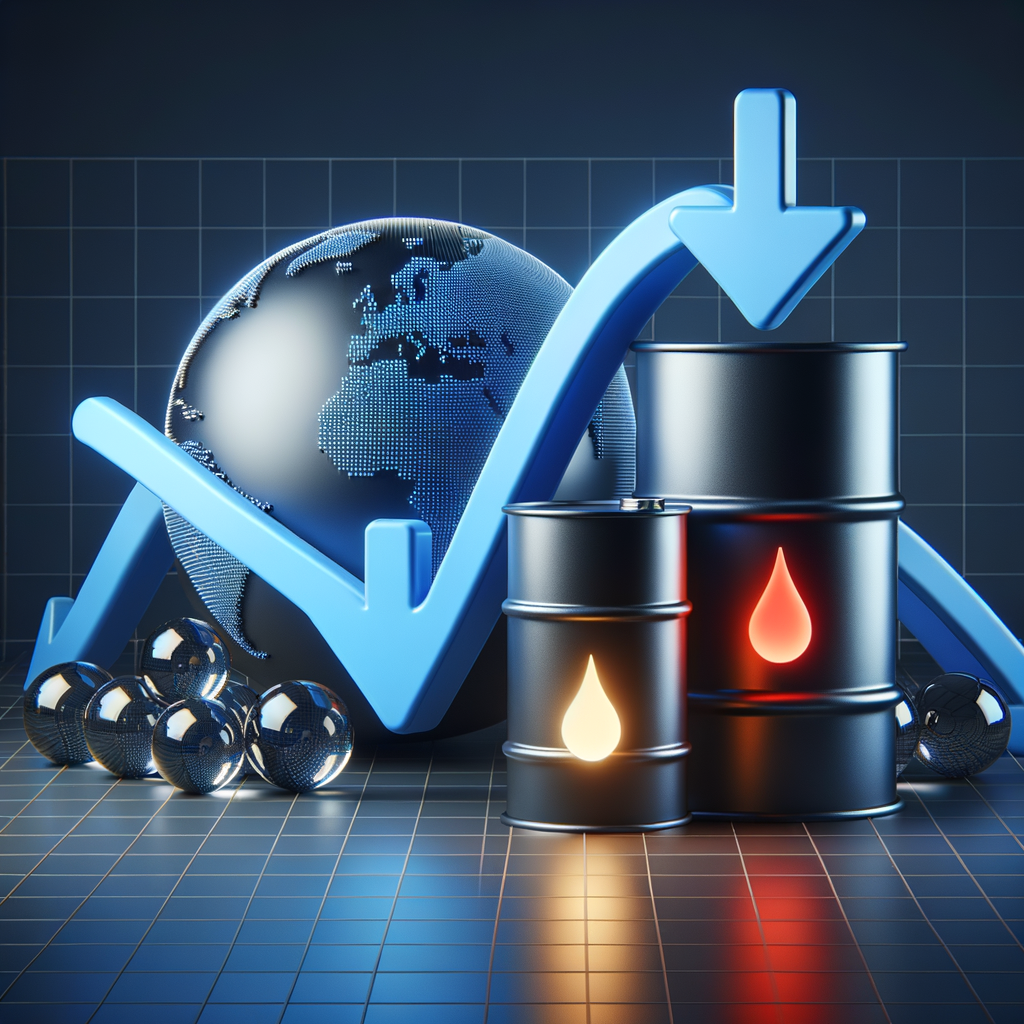Decline in US Oil and Gas Production: Impact of Lower Prices and Future Predictions

Decline in US Oil and Gas Production Due to Lower Prices
Decrease in U.S. Oil Production
The growth of U.S. oil production is slowing down due to the drop in prices. This is a reaction to the initial shock of Russia's invasion of Ukraine and the subsequent sanctions imposed over two years ago. The U.S. Energy Information Administration reports that crude and condensates output from the Lower 48 states, excluding federal waters in the Gulf of Mexico, averaged 11.0 million barrels per day in July 2024. This is an increase of less than 0.4 million barrels per day compared to the same month the previous year, marking the smallest increment for this time of year since the initial waves of the COVID-19 pandemic in 2020/21.
Impact of Price Changes on Production
Following the invasion, oil prices peaked in June 2022 but have since retreated, causing a deceleration in production growth with a typical delay of around twelve months. Inflation-adjusted front-month U.S. futures prices fell to an average of $79 per barrel in July 2023 from $124 in June 2022. A year later, production growth had halved to 0.4 million barrels per day in July 2024 from 0.8 million barrels per day in June 2023. By July 2024, there had been no net growth for eight months since November 2023, resulting in a halt in the sector's expansion.
Future Predictions for Oil Production
Since then, prices have fallen even further to an average of just $69 in September 2024, which is likely to ensure production remains fairly flat through the middle of 2025. If prices stay around current levels, production growth from the Lower 48 will probably fall close to zero by late 2024 or early 2025. Lower prices are curbing U.S. shale producers' willingness to boost drilling and forcing Saudi Arabia and its OPEC⁺ partners to postpone plans to increase output, heading off a potential surplus later in 2024 and 2025.
U.S. Gas Production
Dry gas production averaged 104.3 billion cubic feet per day in July 2024, up from 103.3 billion cubic feet per day a year earlier. However, the seasonal increment was the smallest since the pandemic in 2020. Output growth has slowed as prices have slumped from post-invasion highs reached in the third quarter of 2022 to record lows by the early months of 2024. Between February and April 2024, front-month futures dropped to around $1.80 per million British thermal units, the lowest for over three decades, after adjusting for inflation.
Impact of Over-Production on Gas
Gas has been hit more than oil by over-production, and unlike crude, there has been no equivalent of OPEC⁺ to limit the accumulation of excess inventories by coordinating output cuts. Exceptionally mild temperatures reduced heating and power generation in the winter of 2023/24, leaving the industry with near-record stocks at the end of the heating season and intensifying the crisis. By February 2024, the price slump had become so severe that several major U.S. producers announced plans to curb drilling and production.
Recovery of Gas Production
However, ultra-low prices have encouraged record gas consumption by power generators throughout the summer and gradually returned stocks to more normal levels. By late September 2024, working gas inventories were within ±1 standard deviations of the prior ten-year seasonal average. In response, front-month prices climbed to an average of $2.40 last month, still only in the 3rd percentile for all months since 2000, but a significant bounce from the multi-decade lows six months earlier. If gas production remains subdued, the remaining surplus is likely to be eliminated over the course of winter 2024/25.
Future Predictions for Gas Production
Once the surplus is gone, prices and production will have to increase significantly in 2025 to satisfy the growing demand from generators and exporters.
Bottom Line
The decline in U.S. oil and gas production due to lower prices is a complex issue with far-reaching implications. It is clear that the industry is facing significant challenges, but it also presents opportunities for change and growth. What are your thoughts on the current state of the U.S. oil and gas industry? How do you think these changes will impact the future of energy production? Share your thoughts and this article with your friends. Don't forget to sign up for the Daily Briefing, which is available every day at 6pm.

















